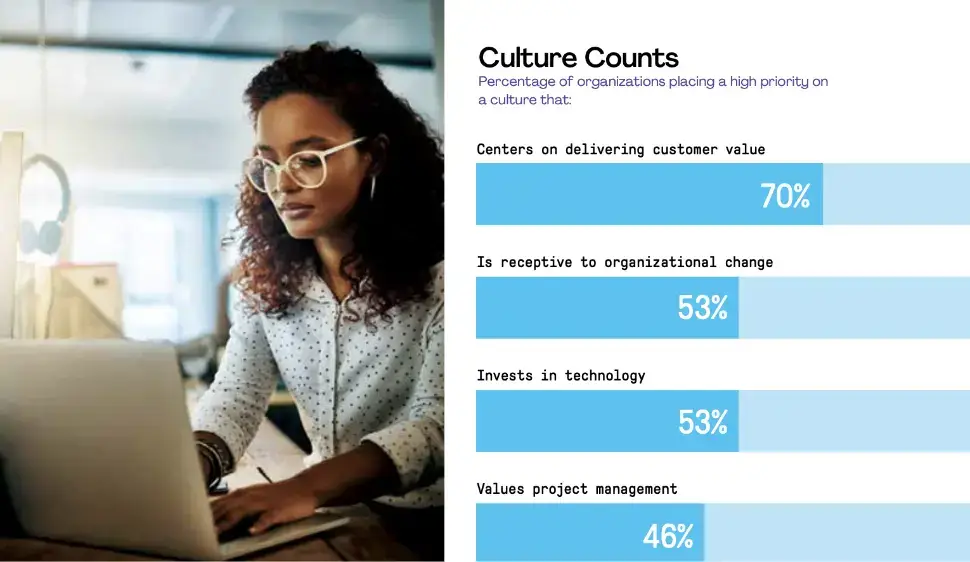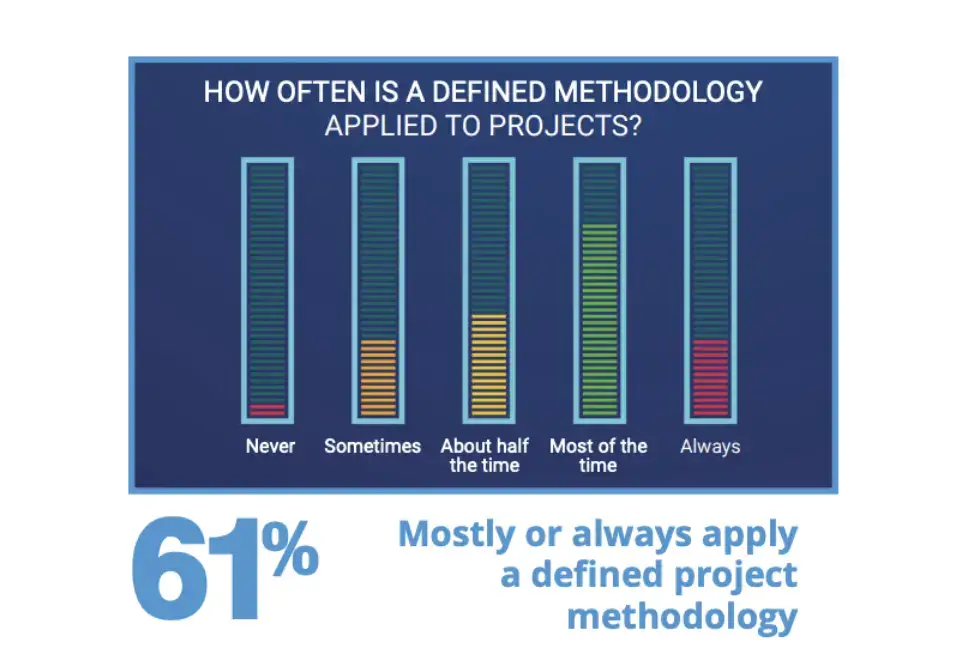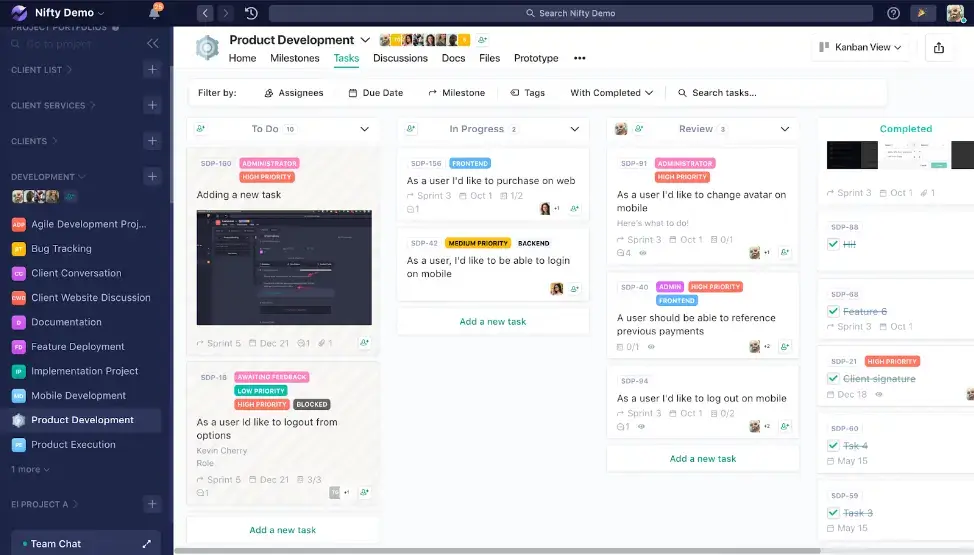Thinking of adopting agile methodologies such as Scrum or Kanban to deliver high-quality web applications faster, but you don’t know where to start?
In this blog post, we will discuss the principles and best practices of agile project management to help your team develop web apps and aid conversion optimization while maintaining better collaboration, flexibility, and customer satisfaction.
In this article:
- What is Agile Website App Development?
- What is Agile Development?
- Why Choose an Agile Project Management Methodology?
- Agile Web App Development Methodology and Process
- Agile Web App Development Frameworks
- What Are the Benefits of Agile Website App Development?

Source: Unsplash
What is Agile Website App Development?
Agile website application development means having an efficient and collaborative team that knows how to make website apps rock by being highly adaptable to the project scopes and striving to make things even more impressive.
It means having a mindset of continuously adding new features, adjusting without any fuss, and fixing any hiccups you come across.
An agile web app development team offering web app development services will have different experts with unique skills. Some are awesome at making things look stunning, while others are coding professionals who ensure everything runs smoothly.
They’re like a well-oiled machine, working together to create top-notch website application solutions and improve website traffic.
Whether you go with physical agile project management or opt for agile project management tools, you should thoroughly understand agile project management.
What is Agile Development?
In 2001, a highly skilled team of professional developers created the concept of agile development. It’s not just about adapting to technological changes; it’s a whole collection of methodologies they put together.
They even wrote the Manifesto for Agile Software Development to share their secrets with the world. The core of agile development revolves around four beliefs:
- Individuals and their interactions should be in control, not just tools and processes.
- Value a working app more than documentation.
- Focus on effective customer collaborations at every stage of development.
- Being responsive to change is way better than sticking to a rigid plan.
Embracing change and flexibility in project management mirrors the essence of custom software development in Chicago, where solutions are meticulously crafted to adapt swiftly to evolving business landscapes and technological advancements.
Agile development flips the script compared to traditional processes. Programmers are involved right from the start in agile development, tackling problems as they arise rather than making many changes just before launching the final version.
With agile development outsourcing, teams can efficiently address challenges as they arise, ensuring continuous improvement and faster adaptation to project needs.
When engaging in collaborative PI Planning, teams converge to schedule, strategize tasks, and streamline operations across departments.
The ultimate goal of agile development is to work smarter, not harder, by creating a final product that needs very few, if any, significant changes.
Why Choose an Agile Project Management Methodology?
Later in this blog post, you will read about the benefits of agile website application development.
It is also worth mentioning that only 46% of organizations prioritize a culture that values project management.

According to a report, despite the importance of project portfolio management, only 61% of participants mostly or always apply a defined project methodology to each project.
However, choosing a method for your projects is crucial if delivering high-quality web applications with speed matters to you.

Agile Web App Development Methodology and Process
Instead of tackling one significant development process, agile breaks things down into smaller, incremental steps called “sprints.” Each sprint has its own unique goal and timeline.
In the Discover phase, ideas are born, and you explore all the possibilities. Then comes Design, where creativity flows and the app starts taking shape. Next is Develop, where developers bring the design to life. The last phase is Test — ensuring everything works flawlessly.
Agile web app development embraces multiple sprints happening simultaneously, meaning that different teams work on various aspects at the same time.
Rather than waiting until the end, agile website app development encourages regular testing and feedback at different stages to get valuable customer insights.
It also invites the use of web app availability monitoring. Being tapped into availability through APM or observability tools lets you pinpoint problems that arise and ensure swift troubleshooting.
Each sprint in agile web development is relatively short, usually just a week or two.
Agile Web App Development Frameworks
Some need a more structured approach, while others thrive on flexibility. Agile development provides multiple frameworks suited for different types of projects.
1. Scrum
Scrum emphasizes teamwork, guided by a Scrum Master who supports and mentors the team through the process.
Key Scrum artifacts include:
- Product Backlog: customer-focused details and required features.
- Planning Sprint: where the team maps out upcoming deliverables.
- Sprint Backlog: the to-do list for each sprint, guiding daily work.
Sprint is a high-energy work zone where the team brings their skills to life and turns ideas into reality.
Teams meet daily in quick Scrum meetings to align progress and plan for the next 24 hours. At the end of each sprint, a review highlights completed work and celebrates progress.

Source: Nifty.com
2. Kanban
Kanban focuses on a lean process, prioritizing cost-effectiveness and efficiency. Unlike Scrum, Kanban is flexible with no rigid roles or structure.
Changes can happen anytime — not just between sprints. Kanban embraces flexibility.
What Are the Benefits of Agile Website App Development?
- Better customer satisfaction
- More project control
- Fewer risks
- Flexibility
- Faster project delivery
1. Better Customer Satisfaction

Source: Unsplash
Since customer feedback is crucial in web app development, they get the app they truly need. Business decisions become data-informed, ensuring better outcomes.
2. More Project Control

Source: Unsplash
Agile development fosters transparency — teams communicate status daily, enabling quick pivots and better control over project progress.
3. Fewer Risks

Source: Unsplash
Organizations without project management integration face nearly two-thirds higher failure rates. Agile mitigates this risk through rapid response and iterative progress.
4. Flexibility

Source: Unsplash
Agile teams adapt based on ongoing feedback, ensuring each iteration aligns with user needs.
5. Faster Project Delivery

Source: Unsplash
Transparent communication between teams and clients allows faster iteration, meaning projects finish in weeks rather than months.
Conclusion
Switching from traditional web app development to agile web app development is a change for the better.
If you want to deliver high-quality web applications quickly while keeping your team happy and customers satisfied, agile project management is here to help you.
Author Bio
Parichehr Parsi is an enthusiastic content creator currently writing for Nifty, a SaaS company offering project management software.
She’s a travel addict, workaholic, and music lover who also enjoys reading, writing, and knitting.

